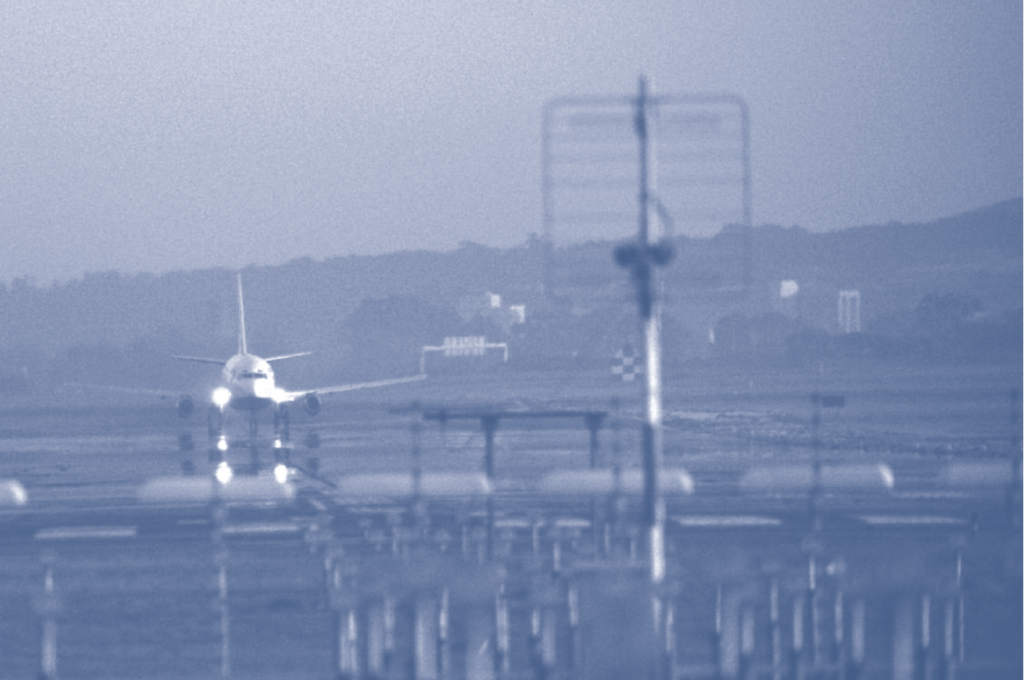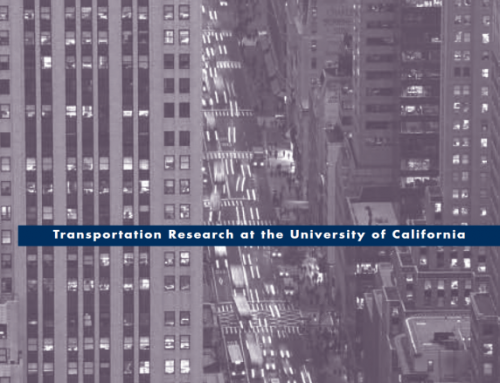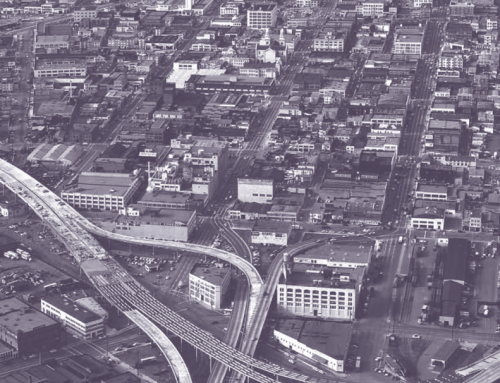Air travel delays have hit new highs in the US since 2000, although passenger traffic and airport congestion have temporarily fallen during the current recession. Similar delays continue to plague European airlines. Although weather is a major source of delays, US Department of Transportation data show that the volume of traffic is also a major cause. What can be done about this airport congestion and the resulting delays?
One remedy is to invest in infrastructure, but new runways take a considerable amount of time to build, and they are expensive. Technological improvements in air traffic control could also increase the capacity of the nation’s airspace and reduce the impact of bad weather. A third remedy is demand management, either through congestion pricing or restrictions on airport slots (rights to land and take off).
Current landing fees paid by airlines depend only on aircraft weight and do not vary by time of day.
Current landing fees paid by airlines depend only on aircraft weight and do not vary by time of day. Under congestion pricing, the landing fees paid by airlines would rise at peak hours, and in response, airlines would move some flights to off-peak periods. Under a slot system, by contrast, flights cannot exceed the total available number of hourly slots, so that a cap on slots limits peak congestion. One way to set up a slot system is to distribute the slots among the airlines and then allow trading, a system analogous to the cap-and-trade approach to pollution reduction. Such a system currently exists at four congested US airports (LaGuardia, JFK, O’Hare and Reagan-National). Another possibility is to distribute the slots via an auction mechanism. An airport’s entire stock of slots can be auctioned anew each year, or the auction can involve just a portion of the total. In 2008, the Federal Aviation Administration proposed such a partial auction for the New York area airports, with a small percentage of the airlines’ grandfathered slot holdings taken back each year and sold to the highest bidders. The airlines strongly objected (they were being asked to pay for something they now hold for free), and the FAA recently withdrew its auction proposal.
Although this recent defeat for government policymakers darkens the near-term prospects for adoption of new demand-management approaches, airport congestion is a long-term problem that will eventually require systematic intervention to control demands on airport capacity. As a result, it is important to gain a better conceptual understanding of the different approaches to congestion management.
Congestion Pricing
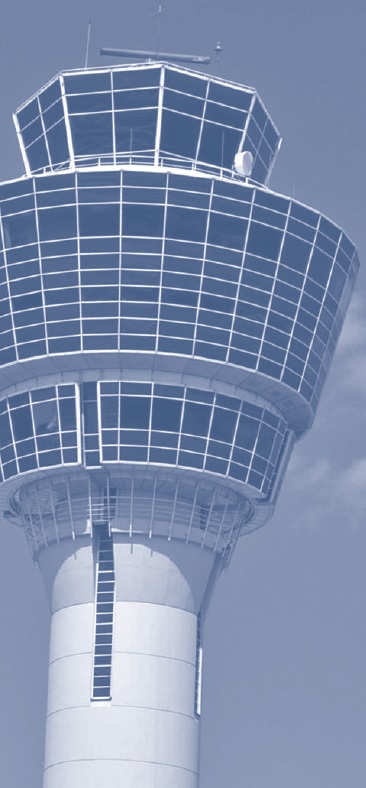 The theory of congestion pricing was developed for roads. Economists recognized that peak road usage is excessive because individual users do not take into account the delays imposed on all other users. Charging a congestion toll equal to the cost of the external delays each user generates will appropriately restrict peak use.
The theory of congestion pricing was developed for roads. Economists recognized that peak road usage is excessive because individual users do not take into account the delays imposed on all other users. Charging a congestion toll equal to the cost of the external delays each user generates will appropriately restrict peak use.
Congestion pricing follows the same logic when applied to airlines, with one important difference. Individual road users are atomistic; each driver is a small part of the total traffic on the road. By contrast, the airlines using a congested airport are typically nonatomistic; most individual airlines account for an appreciable share of the total traffic at the airport. This difference matters for airport congestion tolls, since a nonatomistic airline, unlike an atomistic driver, takes into account a portion of the congestion caused by each of its flights. Specifically, the airline considers the congestion each flight imposes on all the other flights it operates. In other words, it recognizes that scheduling an extra peak-hour flight will slow down its existing flights, possibly making the airline reluctant to add the flight.
The airline’s partial internalization of congestion means that the congestion externality is not as severe with airports as it is with roads. The overscheduling of flights is thus not as excessive as the overuse of a rush-hour freeway. As a result, airport congestion tolls can be less punitive than in the context of road congestion tolls. Just as with road pricing, the airport toll is based on the marginal congestion damage (MCD) from an extra flight, which equals the increase in operating cost for all the affected airlines plus the value of the lost time for their passengers. But because the airline internalizes some of its congestion, the toll does not equal the full MCD, as it would in the road case. It instead equals the MCD multiplied by one minus the carrier’s flight share, which equals the portion of the extra congestion that is not internalized by the airline. The formula thus charges the carrier only for the congestion it imposes on other airlines, exempting the congestion it imposes on itself.
The airport toll is based on the marginal congestion damage (MCD) from an extra flight, which equals the increase in operating cost for all the affected airlines plus the value of the lost time for their passengers. But because the airline internalizes some of its congestion, the toll does not equal the full MCD, as it would in the road case.
For example, at an airport served by three identical airlines, each would pay a congestion toll equal to MCD times 2/3, reflecting the fact that 2/3 of the congestion from an extra flight falls on other carriers. MCD varies over the day, being high at peak hours and low (even zero) in the off-peak periods. Thus, the toll computed by this formula will vary over the day, disappearing when the airport is not crowded.
This toll rule produces a surprising result when applied at an airport where carriers control different flight shares. Because the airport’s largest carrier internalizes much of the congestion from an extra flight, it will pay a low toll. By contrast, because a small carrier feels only small portion of the congestion created by its operation of an extra flight, it will pay a high toll. For example, given that Delta operates more than 70 percent of Atlanta’s flights, it should pay a low toll per flight (equal to 0.30*MCD), while AirTran, which operates around 10 percent of the airport’s flights, should pay a large toll (0.90*MCD).
While this toll pattern is justified on the grounds of economic efficiency, it might be politically infeasible. Small carriers would fiercely oppose a rule that appears to subject them to an unfair burden, regardless of the economic logic. As a result, any practical implementation of congestion pricing might have to adopt a second-best approach, levying the same toll on all carriers. While a uniform toll would approximate an efficient pricing system at airports where flight shares are similar across most carriers (e.g., Boston), such a toll would distort the pattern of flights at airports dominated by one or two carriers. Since the congestion penalty placed on large carriers would be too high, they would be under pressure to shrink or reorganize their operations more than they should. Small carriers, meanwhile, with congestion penalties being too low, would not feel enough pressure to change their operations.
While a uniform toll would approximate an efficient pricing system at airports where flight shares are similar across most carriers (e.g., Boston), such a toll would distort the pattern of flights at airports dominated by one or two carriers.
All these ideas apply, however, only if airlines do in fact internalize their own self-imposed congestion, and not everyone believes they do. Economist Joseph Daniel, for instance, has written a number of papers (with a variety of coauthors) suggesting that the airlines do not internalize congestion costs. Daniel’s argument is based on the behavior of the “competitive fringe,” a set of carriers operating a small portion of an airport’s flights and perceiving no impact on overall congestion from their decisions. Daniel argues that if a large carrier cuts back its flights to reduce self-imposed congestion, then small fringe carriers will fill the resulting gap, leaving overall congestion unchanged. Since the large carrier reaps no benefits from limiting its peak flights, it will have no incentive to do so. In effect, the carrier will seem to behave irrationally, appearing not to recognize that it congests itself. But given the potential offsetting response of the fringe carriers, such behavior is rational.
So do airlines internalize congestion or not? The empirical evidence is mixed. Some studies find no evidence of internalization, while others (including some of my own work) suggest the opposite. If internalization does not occur, then all carriers should be charged the same congestion toll regardless of their size. In effect, the road-pricing model reasserts itself, with each carrier charged MCD per flight, unadjusted for flight shares. Thus, the toll rule is immune to the unfairness critique levied against the previous formula, given that it will not generate asymmetric tolls. But, if congestion is indeed internalized, the toll liabilities faced by the carriers under this formula are too high, and they will excessively shrink and reorganize their traffic.
Slot Systems
Rather than deciding what congestion toll to charge, the airport authority under a slot system decides on how many slots to make available. This decision must be made for each time interval over the day (usually in 30 minute increments). Under a trading system like those in place at some congested US airports, the chosen slot total is distributed without charge among the carriers according to some allocation rule, with reallocations possible via trade. Initial slot allocations in the US were determined years ago, but continuous trading (usually involving leases, not sales, of slots) has redirected many slots to new users.
Before making any decisions about flight volumes and slot trades, carriers know that the overall congestion level at the airport is fixed and independent of their choices. The reason is that a slot system fixes in advance the total number of slots allocated for each time interval, thus determining the airport’s total flight volume and congestion level. By contrast, since carriers under congestion pricing are free to operate as many flights as they like provided they pay the toll, the overall level of airport congestion will respond to their choices. The overall flight volume, and thus the level of congestion, is not fixed in advance.
As long as the airport authority distributes the right total number of slots, the trading process guarantees that the slots are distributed correctly among carriers.
Since congestion impacts cease to be a carrier’s concern under a slot-trading system, the complications caused by internalization of congestion (particularly the need for carrier-specific tolls) vanish. As long as the airport authority distributes the right total number of slots, the trading process guarantees that the slots are distributed correctly among carriers. A single slot-trading price suffices, with no need for prices tailored to individual airlines. In effect, as long as the airport authority chooses the slot total (and thus the overall congestion level) correctly, market forces ensure that carriers’ individual slot holdings and flight volumes are right.
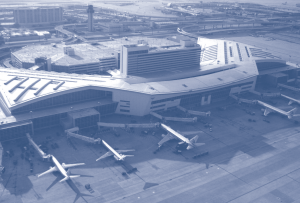 Theoretically, the same conclusions apply to a slot-auction system. Assuming the airport authority auctions the same number of slots as it would have distributed for free under a trading system, the two systems result in the same allocation of slots and flight volumes across carriers. The auction price is also the same as the equilibrium slot-trading price, which turns out to equal MCD. Note, however, that while the auction revenue accrues to the airport, no revenue is earned when slots are freely distributed (though money does change hands between carriers).
Theoretically, the same conclusions apply to a slot-auction system. Assuming the airport authority auctions the same number of slots as it would have distributed for free under a trading system, the two systems result in the same allocation of slots and flight volumes across carriers. The auction price is also the same as the equilibrium slot-trading price, which turns out to equal MCD. Note, however, that while the auction revenue accrues to the airport, no revenue is earned when slots are freely distributed (though money does change hands between carriers).
A further virtue of both slot systems is that their performance does not depend on whether the airlines internalize congestion. Since the fixed slot total makes congestion irrelevant to the airline’s choices, whether or not its effects are internalized is of no consequence. By contrast, the correct toll structure depends crucially on whether internalization occurs.
Economist Joseph Daniel identifies one potential downside to slot systems, however. He argues that, given their wide 30-minute time window, slots are too crude an instrument to properly attack airport congestion. Daniel argues that small scheduling changes at hub airports (such as spreading out clustered departures by 10 minutes) can greatly reduce congestion. Congestion tolls that vary minute by minute, he argues, would most effectively generate such changes.
Implications
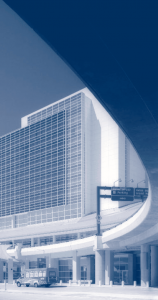 What do we learn from this discussion? One important lesson is that the current slot system for congestion management at airports may be better than recognized. Provided that airport authorities have chosen the right slot totals, and provided that the slot-trading system works in the manner envisioned in the theory, the outcome is equivalent to the one emerging under a more elaborate congestion-pricing system.
What do we learn from this discussion? One important lesson is that the current slot system for congestion management at airports may be better than recognized. Provided that airport authorities have chosen the right slot totals, and provided that the slot-trading system works in the manner envisioned in the theory, the outcome is equivalent to the one emerging under a more elaborate congestion-pricing system.
Whether slot totals are correctly set is a matter of debate. In the recent decision for New York airports, the airlines argued that the FAA chose hourly totals that were too restrictive. Generally, conservative slot decisions may limit congestion too much, excessively restricting peak-hour airport access to travelers who need it, and policymakers should bear this principle in mind.
Whether the slot-trading system works properly is also a matter of debate. In proposing its partial auction scheme for the New York airports, the FAA acted on a suspicion that trading volumes are inadequate and slot allocations need to be scrambled via an auction. A recent study by Hideki Fukui of slot-trading patterns over the late 1990s, however, did not find clear evidence of anti-competitive behavior, which casts some doubt on the existence of a major problem. Nevertheless, proposals for enhancing the performance of the slot market are welcome, including the replacement of bilateral trading with a web-based, central clearinghouse that hides identities of buyers and sellers. With such improvements and the proper choice of slot totals by policymakers, the current system may be adequate for airport congestion management as air travel resumes its long-run upward trend.
Further Readings
Jan Brueckner, “Airport Congestion When Carriers Have Market Power,” American Economic Review 92, December 2002.
Jan Brueckner and Kurt Van Dender, “Atomistic Congestion Tolls at Concentrated Airports? Seeking a Unified View in the Internalization Debate,” Journal of Urban Economics 64, September 2008.
Jan Brueckner, “Price vs. Quantity-Based Approaches to Airport Congestion Management,” Journal of Public Economics 93, June 2009.
Joseph Daniel and Katherine Harback, “(When) Do Hub Airlines Internalize their Self-Imposed Congestion Delays? ” Journal of Urban Economics 63, March 2008.
Joseph Daniel and Katherine Harback, “Pricing the Major US Hub Airports,” Journal of Urban Economics 66, July 2009.
Hideki Fukui, “An Empirical Analysis of Airport Slot Trading in the United States,” Transportation Research Part B, forthcoming, 2010.
Christopher Mayer and Todd Sinai, “Network Effects, Congestion Externalities, and Air Traffic Delays: Or Why All Delays Are Not Evil,” American Economic Review 93, September 2003.

